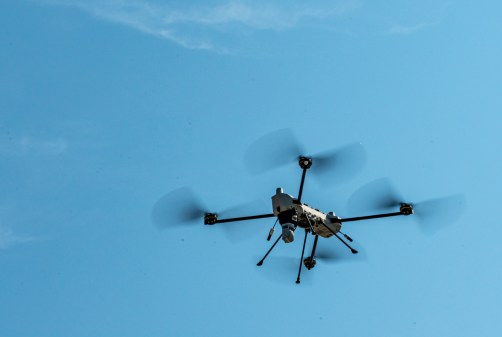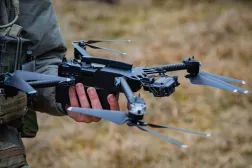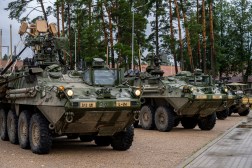Army ‘transforming-in-contact’ unit using more drones than ever before
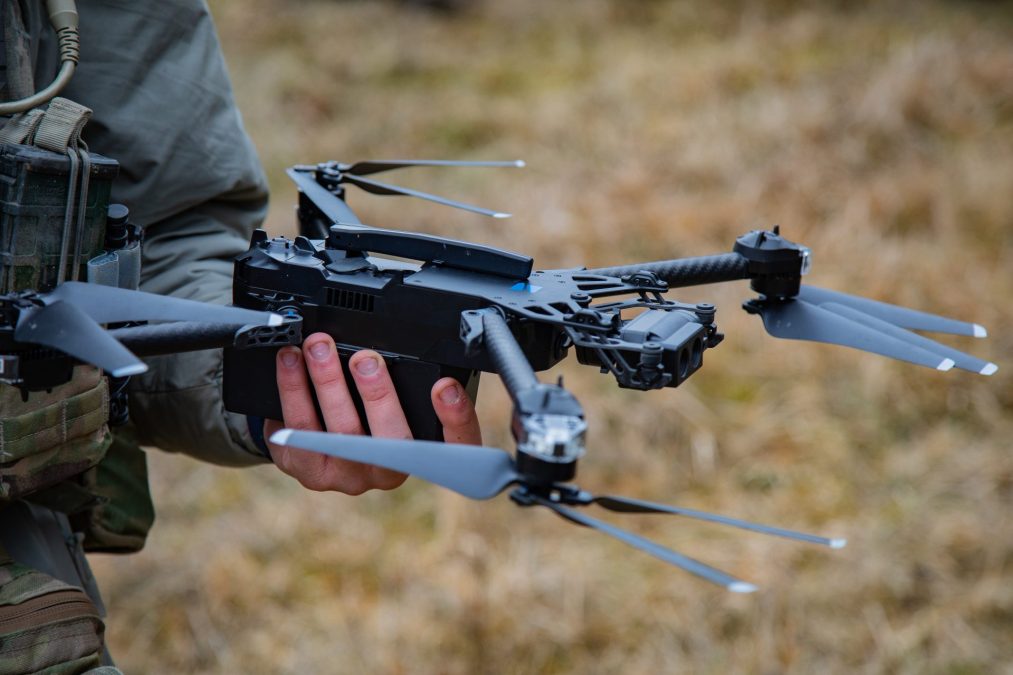
This is part one of a three-part series examining the conclusion of the Army’s transforming-in-contact 1.0 initiative and looking forward to the next iteration. Part two can be found here.
Pulling on lessons from Ukraine, an Army unit testing an experimental concept recently employed the most drones it’s ever used in an exercise of its kind, to great effect against the enemy, according to officials.
3rd Brigade, 10th Mountain Division was the third and final unit to participate in a large training exercise as part of the first iteration of what the Army is calling “transforming-in-contact.” A top priority for the chief of staff of the Army, the concept envisions using deployments and troop rotations to test new equipment — mainly commercial off-the-shelf gear — that could allow units to be more responsive on a dynamic battlefield. It has initially focused on three main areas where officials say the Army needs to be faster and more adaptable when it comes to delivering equipment to forces, due to how challenging the threat environment is and the cat-and-mouse aspect of countering opponents’ moves: unmanned aerial systems, counter-UAS and electronic warfare.
The unit just completed its combat training center rotation — the most realistic combat scenarios the Army can create for units to train — in Germany, which was also folded into Combined Resolve, a recurring multi-partner exercise. This was the first transforming-in-contact rotation to take place overseas.
Given the unit has been deployed near Ukraine, lessons from that conflict with Russia featured prominently during the rotation, to include providing the first real template for how the concept could work in the future as envisioned in combat.
“I think we gave the Army a really good look at what it would mean if we had to do something like this in a scenario where we were at war, getting ready to go to war very rapidly, and for us, it’s just been a great opportunity,” Col. Joshua Glonek, commander of 3rd Brigade, 10th Mountain Division, said in an interview, noting that his unit has been deployed since July. “For us the ‘in contact’ part of it was really exemplified by the fact during a real deployment with an operational mission.”
Officials noted that given the proximity to Ukraine, one of the major lessons planners took for the exercise was the use of unmanned aerial assets.
“The big difference capability-wise, for our rotation, was the density of drones that we had fielded and trained with. We had more drones that we employed in this rotation that have ever been brought to a combat training center before,” Glonek said, distinguishing between the first two transforming-in-contact rotations.
Officials said there were over 200 UAS of different sizes during the rotation.
Glonek noted that the unit was able to keep a variety of drones up against the opposing force, continuously serving as the primary means to identify them and call for fire, which was used to great affect.
This rotation was the first instance where the opposing force’s zone for expected visual contact by the rotational unit was shrunk considerably, due to the drones.
Maj. Mark Matthey is serving as the executive officer of 1st Battalion, 4th Infantry Regiment, the opposing force at the Joint Multinational Readiness Center in Hohenfels, Germany, which goes against all the rotating brigades. He noted that in his seven rotations with the opposing force — which generally tries to replicate Russian threats — the mass of UAS posed challenges for his unit that he’d never encountered against a rotating unit before.
He explained that the longer-range capabilities forced his unit to do two things. First, the opposing force had to lengthen their defensive posture time and do it farther away from the area they planned to defend given the constant threat of being seen overhead. Second, if they saw the smaller UAS, they had to constantly move.
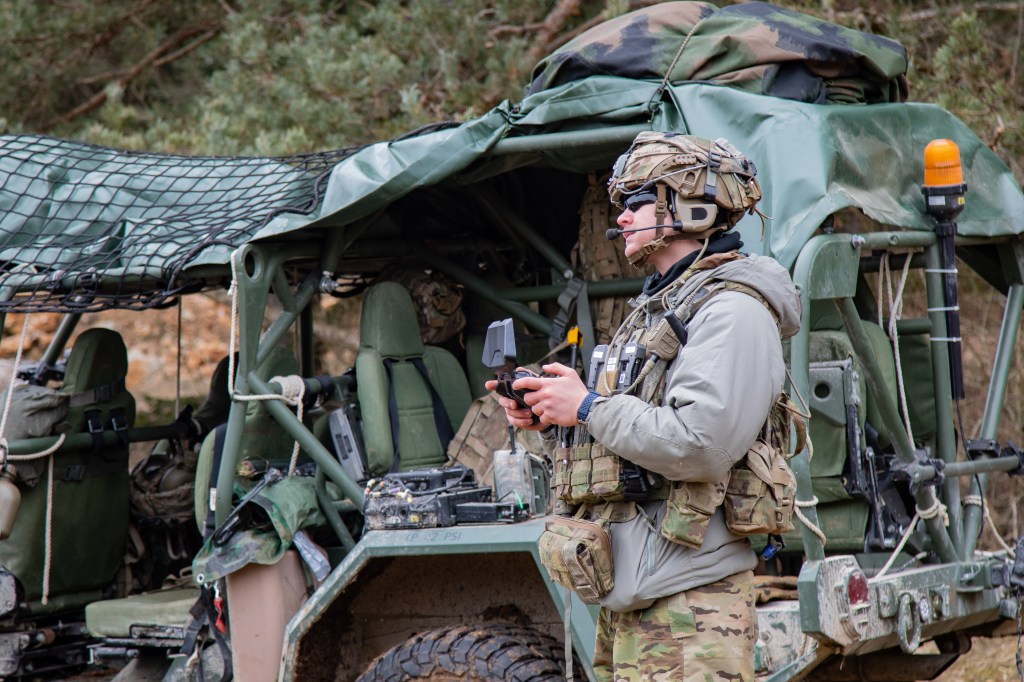
“They had such a mass of them that it was completely different [from] anything we’ve done,” Matthey said in an interview.
Moreover, while the unit wasn’t great at the beginning of the rotation, by the final days 3rd Brigade was extremely effective at coordinating artillery with its reconnaissance drones, a key lesson from the war in Ukraine.
Officials also noted the ease of use for these systems. A key tenet of transforming-in-contact is leveraging commercial technology that can be fielded rapidly and don’t require a lot of training — as opposed to traditional weapon systems that involve weeks at a school house for soldiers to become proficient with them.
“It’s not like most equipment I’ve been fielded throughout my career. It doesn’t take long to get a soldier trained on these new drones. It’s a matter of hours, as opposed to weeks in terms of what we used to see for other systems,” Glonek said. “The controller that they’ve been using for their entire life, frankly, and they’re just now applying it to fly a drone instead of playing a video game.”
With these new reconnaissance capabilities, the brigade reorganized some of its subordinate units into what it dubbed strike companies, similar to the multifunction reconnaissance companies the other two transforming-in-contact brigades created.
Those units — equipped with drones, loitering munitions, mortars and other equipment to shorten the sensor-to-shooter chain — can now begin to degrade enemy formations sooner before they come in range of more traditional friendly units.
This allows them to not have to call through multiple echelons for support since they possess all the capability they need organically, a critical enabler for surviving on modern, fast-paced battlefields.
There are also broader, joint applications for UAS assets in a theater-wide fight against a sophisticated adversary. If smaller units are able to extend their reach and view of the battlefield, the Army and joint force are examining what that means for higher echelons from a battlefield geometry perspective.
Officials from V Corps, which is permanently deployed in Europe, have held conversations with the Air Force regarding how these smaller systems can open accesses for larger air platforms.
“When we start talking about getting in through past anti-access, area-denial capabilities [of] the enemy, what kind of anti-air defense problem sets need to be solved early in order to get Air Force assets in?” Col. Aaron Dixon, deputy chief of staff for operations, plans and training, G3 at V Corps, said in an interview. Air Force officials “answer back to us with some of this technology for you being able to sense and reach at the lower ground level, actually assists the Air Force in ways that we hadn’t really thought of before. You can do a launch and recovery much closer to the target with these smaller ground assets that may mitigate some of that anti-air capability that the enemy has on the other side.”
He added that the information gathered at these types of rotations informs how the Army and joint force shape themselves up all echelons.
Informing Big Army
The big idea behind the transformation-in-contact concept is to test equipment in high-tempo scenarios, learn from them and then apply those lessons at the department level to inform procurement, equipping or training changes in the future.
“Transformation-in-contact, I mean, it’s just all about getting equipment that is available right now in the hands of soldiers so they can experiment with it, figure out what works, what doesn’t work, and then maybe we can shorten a little bit of the procurement and acquisition timelines that we have to get things that are available now out to the force quicker,” Lt. Gen. Charles Costanza, commander of V Corps, said in an interview.
A key aspect to that is to test capabilities in different climates to see how they perform. The Army has decided it will no longer be pure-fleeting capabilities, meaning the entire Army won’t get all the same gear. Rather, it will look to tranche systems to priority units and base those capabilities on where they expect to fight.
2nd Brigade, 25th Infantry Division tested systems in the humid archipelagos and dense foliage of the Pacific and 2nd Brigade, 101st Airborne Division in the swamps of Louisiana. Those conditions are in large contrast to the frigid mountains of Europe for 3rd Brigade, 10th Mountain Division.
The feedback between each of the previous two brigades was key for 3rd Brigade, 10th Mountain.
“That was actually one of the most important parts of our preparation, was ensuring that we learned the lessons that the previous TiC units had discovered during their rotations,” Glonek said. “Because as much as this is a great training for us, more importantly, it’s part of a big learning campaign for the Army.”
This was a key point for Army Chief of Staff Gen. Randy George to ensure the Army tests out.
“That’s exactly what we wanted to do. We wanted to exercise things in all different types of terrain,” George told reporters at the Pentagon on Wednesday.
Weather, as well as the mountainous terrain, played a significant factor in the employment of the drones in Europe.
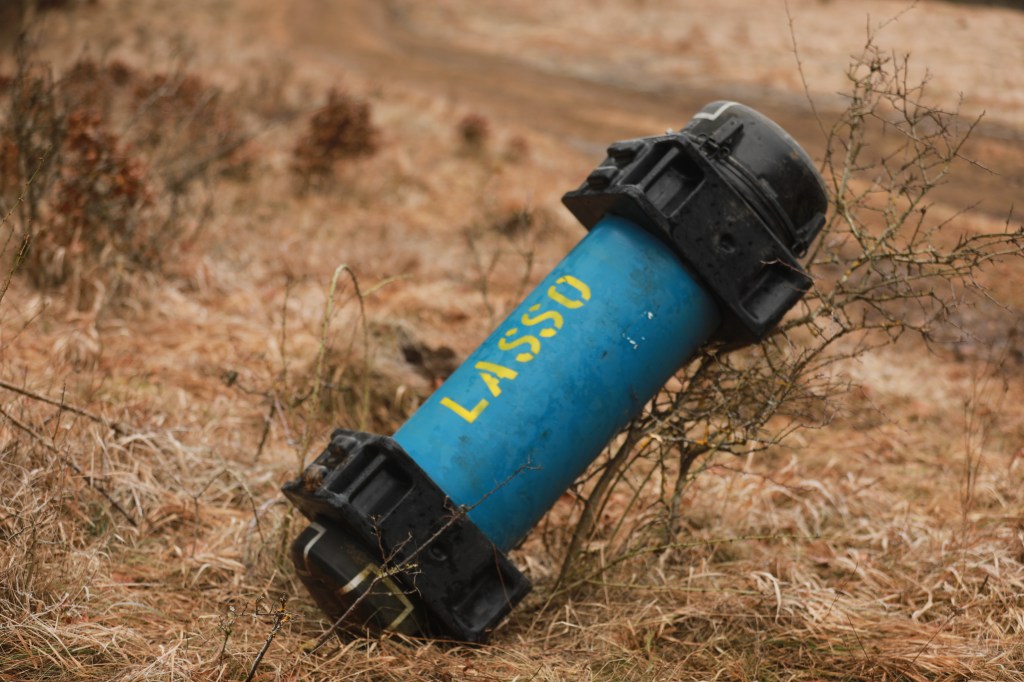
3rd Brigade faced near freezing temperature most of the time, affecting the battery life of many systems.
Short-range reconnaissance drones were reduced significantly in their battery lives, for example. The battery life, in some cases, was cut in half, meaning they couldn’t fly as long or be as effective. In one example, drones that could fly in Louisiana with the 101st Airborne Division for 20 minutes were only able to fly for four to five in Germany with 10th Mountain Division.
“What we ended up noticing was shorter distances than we would have expected out of the flight distance of a drone and then shorter time while it was up, because they’re just not lasting as long when the weather’s 20 to 30 degrees,” Matthey said. “Charging it is hard. You got to have a warm place to charge it or the charge is slow. The same amount of time that it’s going to take to charge it fully, you’re going to get 60 to 70 percent of it in the weather that we had. It was just a delay. It just was a slower fight in that sense.”
Glonek also noted that certain mobility platforms being tested also became challenging due to the cold, and everything becomes more brittle and fragile in those conditions.
The terrain was different than other venues such as the Joint Readiness Training Center in Louisiana for the first transforming-in-contact rotation and the Joint Pacific Multinational Readiness Center in Hawaii. Hohenfels is much more wooded with rolling terrain.
“What nobody, us included, took into account was the terrain. All of these systems are limited by the radio frequency transmission at line of sight,” Matthey said. “If you don’t have some other capability to extend that, you become really limited in the terrain that we have. Weather plays a part in that as well. The differences that we’re seeing in just geographic location between what can a system do in one environment and not do in another, that was really surprising.”
The terrain presented some limitations in deploying the drones.
Given the overall successful employment of UAS during the rotation and what officials are seeing in Ukraine, the Army must get faster at equipping soldiers with these assets.
“The number one piece [from Ukraine] that is obvious is the proliferation [of] those small UAS, and I think the way that we’ve got to get faster at producing those UAS,” Costanza said in an interview. “Things change so quickly. The way we’ve done things in the past with these big, exquisite, expensive UAS, I just think that’s not going to be effective.”
Moreover, the Army is now trying to shift its thinking to view these platforms as expendable — meaning it’s not as much of a concern if they’re lost or crashed — a change from when these systems were part of a unit’s official accounting for equipment, with burdensome paperwork required if unaccounted for.
“We just got to change our mindset on that stuff where it’s expendable. It’s just an expendable piece of property, so when it crashes, it’s no big deal, hey that’s just how it works,” Costanza said. “It’s a drone, it’s a little bitty, small UAS, so if you lose it, it doesn’t really matter. You got more coming or you can print more.”
He noted that some units have begun experimenting with 3D printing systems in the field as a means of producing them more rapidly.
George stressed the importance of testing different equipment with each unit as well, including giving more drones to 3rd Brigade, 10th Mountain, to see how they use the gear and how it affects how they operate.
“This particular brigade actually had different systems than when any of you would have seen down at JRTC. I always tell everybody, we know that the drone technology and some of these technologies are moving very rapidly. The drones that they had were different,” he said. “As an example, there was one system that was the medium-range reconnaissance drone. Longer range, a little easier to operate, cheaper, those kinds of things. That’s what we’re looking for and I think that that’s kind of the path that we’re going to be on.”
George and the top civilian Army leadership during the Biden administration sought to secure flexible funding from Congress for drones, counter-drone tools and electronic warfare in order to stay ahead of the rapid commercial tech curve.
“What we’re looking at doing is, again, buying capabilities, so having money set aside that says, hey, we can buy the best drones that are on the market, modular open system architecture,” he said.
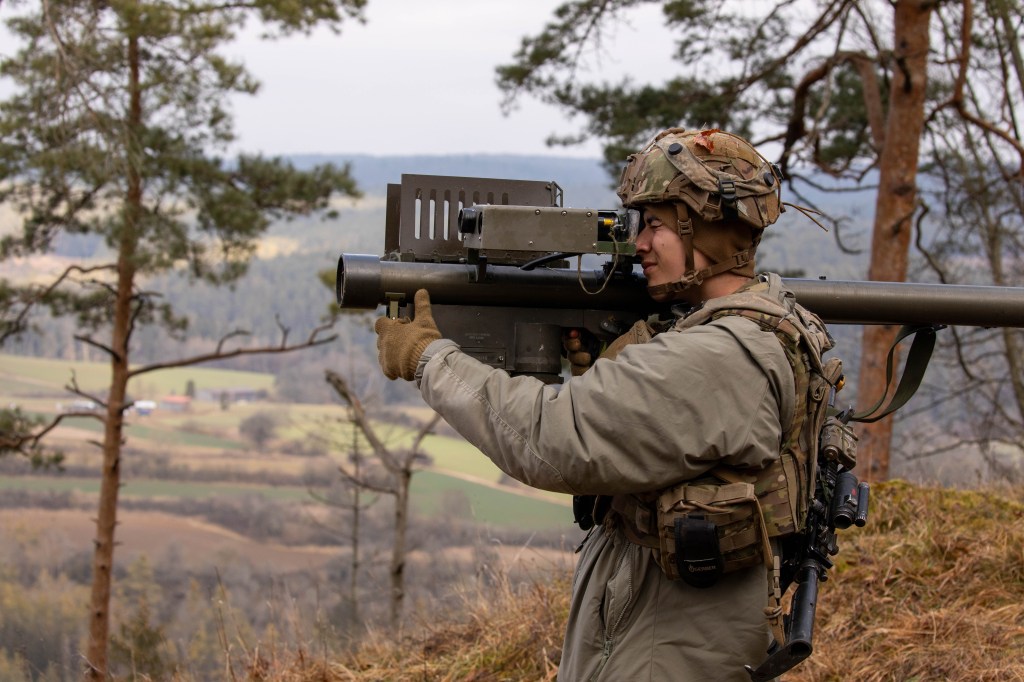
Not securing those flexible funds will prevent the Army from being able to scale the initiative, George explained.
He noted that the feedback from Congress has been positive overall, especially considering the Army has sought to just focus on those three areas where technology is moving so rapidly.
“For years, I have called for the Department of Defense to be more efficient and go faster when it comes to the critical weapons platforms that our men and women in uniform need. I support the Army’s efforts to pursue flexible funding for drones, counter-drone solutions, and electronic warfare capabilities,” Rep. Rob Wittman, R, Va., vice chairman of the House Armed Services Committee and chairman of the panel’s Tactical Air and Land Forces Subcommittee, said. “This effort will allow the Army rapidly adopt critical technologies that are shaping the modern battlefield without needlessly wasting time with misaligned dollars. I look forward to working with the administration and our new Secretary of Defense to ensure our warfighters have all the tools they need to keep Americans safe.”
Allies and partners
Officials lauded the importance of conducting this rotation abroad, alongside partners, exactly the way the military expects to fight a future conflict.
While 2nd Brigade, 25th’s rotation included partners from Pacific nations, this last rotation upped the number of partners and integration.
“The biggest difference, I would submit, is the context in which it’s happening. We’re doing it in a foreign country, with a host nation, partners and allies. And I don’t know if other than trying to replicate some of that, the previous rotations didn’t really happen in that context,” Col. Matt Davis, cyber and electromagnetic chief and transformation chief for V Corps, said in an interview regarding the difference between this transforming-in-contact rotation and others.
While that poses some challenges, officials noted it provides a good venue to work out kinks before crises or conflicts break out.
One of those issues involves spectrum and frequency management. Each nation has different rules and requirements to how different bands of the finite electromagnetic spectrum are allocated — for military, commercial and other use.
“When you go to a host nation, you’ve got to work through their process. Equipment that might work in the [United] States, that could be emergency broadcast system for the host nation. Those frequencies might be reserved just for them. Working through those processes and getting the approvals, that’s a challenge that we’re working through,” Col. Jonathan Gendron, the communications officer for V Corps, said in an interview.
Moreover, as the Army is seeking to field newer equipment and integrate with partners and allies, working with them now helps assuage those integration challenges.
In “our transformation-in-contact experience … we’ve had our allies embedded from the get-go. It helps with interoperability, understanding how these systems work with NATO partners and others,” Glonek said. “But it also helps to bring them along as well because as they’re seeing what we’re doing, all of the military partners that I’ve had are incredibly enthusiastic and interested in moving that same direction on their own. It helps stimulate good ideas and thinking for our allies who similarly see a sense of urgency about why they need to modernize their formations.”
Part two of this series will focus on how new networking and communications equipment has allowed the unit to operate more dispersed and reduce its footprint within the electromagnetic spectrum.
